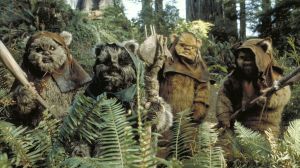The 2000s brought groundbreaking innovations to horror cinema that continue influencing filmmakers today. From found-footage techniques that changed how we experience fear to intimate character studies that elevated the genre’s storytelling potential, this era delivered unforgettable scares that resonated with audiences worldwide. Furthermore, independent productions proved horror could tackle complex themes while maintaining commercial appeal, while major studios took chances on unique creative voices that would reshape the genre landscape.
Videos by ComicBook.com
Through careful character development, innovative directing techniques, and genuine emotional stakes, the best horror films of the 2000s demonstrate how genre pictures can tackle complex themes while still delivering the scares audiences crave. Here’s our picks for the best horror movies of the 2000s.
Drag Me to Hell (2009)
Sam Raimi’s return to horror follows Christine Brown (Alison Lohman), a loan officer cursed to be dragged to hell in three days after denying a mortgage extension to an elderly woman. The film perfectly balances genuine scares with gleefully twisted comedy, powered by Raimi’s masterful direction that transforms this tale of karmic revenge into a rollercoaster ride. Through dynamic camera movements, memorable practical effects, and a deep understanding of how to build tension, Drag Me to Hell creates a uniquely engaging horror experience that demonstrates why Raimi remains one of the genre’s most influential voices.
Cloverfield (2008)
Director Matt Reeves and producer J.J. Abrams revolutionized the monster movie genre with this found-footage masterpiece that follows a group of friends documenting their desperate attempt to survive a massive creature attack on New York City. By grounding its spectacular destruction through intimate, documentary-style filmmaking, Cloverfield creates an immersive experience that makes its fantastic elements feel terrifyingly real. The film’s focus on ordinary people caught in extraordinary circumstances and masterful special effects that never break the found-footage illusion create a haunting portrait of survival against impossible odds that still
The Ring (2002)
Gore Verbinski’s atmospheric horror masterpiece follows journalist Rachel Keller (Naomi Watts) as she investigates a mysterious videotape that kills viewers seven days after watching it. The film’s strength lies in its ability to create overwhelming dread through subtle visual cues and psychological manipulation rather than relying on jump scares. Through its exploration of urban legends and technology-based fears, alongside Watts’ compelling performance as a mother fighting to save her son, The Ring crafts a profoundly unsettling story that transforms mundane objects like televisions and telephones into sources of terror. Plus, The Ring is one of the best horror remakes, capable of standing on its own legs while showing respect for the original Japanese flick.
Martyrs (2008)
Pascal Laugier’s uncompromising film follows Lucie (Mylène Jampanoï), who escapes from brutal captivity as a child only to be haunted by visions of her tormentors years later. When she finally tracks down those responsible, her closest friend Anna (Morjana Alaoui) becomes entangled in a secret society’s disturbing quest for spiritual enlightenment through suffering. Through its unflinching portrayal of trauma and sophisticated exploration of martyrdom, Martyrs transcends typical revenge narratives to deliver a philosophically rich horror experience that challenges viewers to keep their eyes open while maintaining powerful emotional resonance.
[RELATED: Before Wolf Man, These Are the 7 Best Werewolf Movies]
The Others (2001)
Alejandro Amenábar’s gothic experience stars Nicole Kidman as Grace Stewart, a devoutly religious mother struggling to protect her photosensitive children Anne (Alakina Mann) and Nicholas (James Bentley) in a fog-shrouded Victorian mansion. When three mysterious servants arrive, led by the enigmatic Mrs. Mills (Fionnula Flanagan), a series of inexplicable events forces Grace to question everything she believes about life, death, and reality itself. Through its masterful use of atmosphere and psychological manipulation, The Others transforms familiar haunted house tropes into a profound exploration of grief, faith, and maternal devotion. The film’s true genius lies in how it uses its period setting and gothic elements to craft the ultimate ghost story.
Shaun of the Dead (2004)
Edgar Wright’s brilliant horror-comedy follows Shaun (Simon Pegg), a directionless electronics salesman stuck in a dead-end job and a failing relationship with his girlfriend Liz (Kate Ashfield). When London falls to a zombie outbreak, Shaun must finally step up, joining forces with his slacker best friend Ed (Nick Frost) to rescue his mother (Penelope Wilton) and win back Liz. Wright’s signature rapid-fire visual style and razor-sharp script, co-written with Pegg, elevate this beyond simple parody. Instead, the zombie apocalypse becomes a perfect backdrop for exploring very human themes about growing up, accepting responsibility, and maintaining relationships.
Let the Right One In (2008)
Tomas Alfredson’s Swedish masterpiece introduces us to Oskar (Kåre Hedebrant), a bullied 12-year-old boy who forms a profound connection with Eli (Lina Leandersson), a mysterious girl who only appears at night in their snow-covered Stockholm suburb. As their relationship deepens, Oskar’s discovery of Eli’s vampire nature transforms this intimate character study into something far more complex. Against a stark winter landscape, Alfredson crafts a tender coming-of-age story that reimagines vampire mythology through the lens of childhood loneliness.
Paranormal Activity (2007)
Directed by Oren Peli, this found-footage phenomenon centers on Katie (Katie Featherston) and Micah (Micah Sloat), a young couple whose attempt to document strange occurrences in their suburban San Diego home spirals into a nightmare. As Micah’s obsession with capturing evidence intensifies, the supernatural presence grows more aggressive, revealing a sinister decades-old connection to Katie. Armed with nothing but security cameras and practical effects, Peli manipulates negative space and sound design to create overwhelming dread. Yet beneath the supernatural scares lies an equally disturbing portrait of a relationship crumbling under the weight of fear, making its explosive climax all the more devastating.
28 Days Later (2002)
Danny Boyle reimagines zombie cinema by opening with Jim (Cillian Murphy) awakening from a coma to discover London abandoned. Alongside fellow survivors Selena (Naomie Harris) and Mark (Noah Huntley), he uncovers the horrifying reality: a “rage” virus has transformed most of the population into rabid killing machines. Shot on early digital video cameras that lend a raw documentary feel, Boyle’s apocalyptic vision stands apart in its exploration of human nature. The real horror emerges not from the infected masses but from the survivors themselves, as the distinction between civilization and savagery blurs in the fight for survival. The movie also redefined the zombie mythology by turning the undead into agile killing machines instead of their classic slow interpretation.
The Descent (2005)
Neil Marshall’s horror movie is one of the best 2000s horror movies, and there are no questions about it. The Descent follows Sarah (Shauna Macdonald), who joins five friends for a spelunking expedition one year after losing her husband and daughter. Under the leadership of the ambitious Juno (Natalie Mendoza), what begins as adventure becomes a desperate fight for survival when the group finds itself trapped in an unmapped cave system. Marshall builds unbearable tension long before revealing the ancient predators lurking in the darkness, as the cave’s suffocating environment brings long-buried resentments and betrayals to the surface. This sophisticated approach to horror transforms a monster movie into a multifaceted study of trauma and survival, with an all-female cast facing both physical and psychological terrors that will haunt viewers long after the credits roll.








